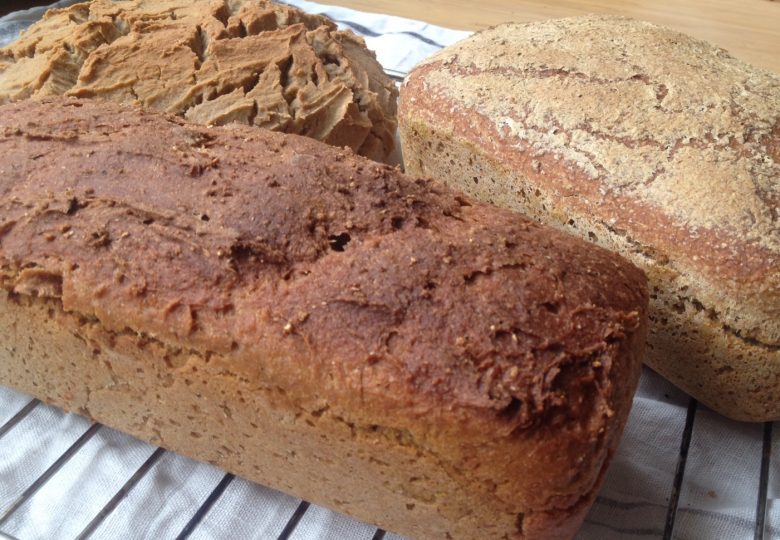All you need to know about gluten

What is gluten?
- Gluten is an insoluble protein in wheat and other cereals, like spelt, rye, barley and kamut.
- It provides the flour with visco-elastic properties and allows the dough to rise.
- It consists mainly of two proteins: gliadin and glutenin. There are alpha, beta, gamma and omega types of gliadin. Enzymes called transglutaminase (tTG) help to digest the wheat.
Gluten intolerance
We have to differentiate between the different reactions to gluten:
- Allergy : real allergy (IgE reaction): you cannot consume ANY gluten.
- Celiac disease: an auto-immune response to a specific type of gliadin (alpha) and a specific type of transglutaminase (number 2). Between 0.7-1% of people are diagnosed with this condition. It provokes atrophy of the intestinal villi in the small intestine, leading to a destruction of the intestinal wall. As a consequence, certain nutrients (calcium, vitamins, iron…) are not absorbed correctly which leads to severe nutrient deficiencies. Those people cannot have any gluten without experimenting severe digestive reactions and should avoid gluten completely.
- Non-celiac gluten sensitivity: One can also react to gluten or wheat without being celiac. It’s neither an autoimmune reaction nor an allergy. One will test negatively to the classical alpha-gliadin and transglutaminase-2 antibody tests. But there are other substances in gluten or wheat one can react to and that are not tested (e.g. beta, gamma or omega gliadin, glutenin, other types of transglutaminase, certain types of sugars called « fodmaps »). The symptoms can be very divers and are not necessarily related to digestion. They can manifest as brain fog, skin outbreaks, hormone imbalances, stomach pains, congested liver, muscle pains, lesions to the blood vessels… So while this condition isn’t as threatening in the short run (compared to the other two), it can increase the risk for many diseases in the long run.
The only way to know for sure if one reacts to gluten, or other substances in wheat, is to not eat it for at least 30, better 60 days and then reintroduce first barley and some days later wheat. If one reacts to the barley, it’s the gluten. If one doesn’t react to the barley, but to the wheat, it’s another substance in the wheat.
Since cross-reactivity is an issues, it is recommended to eliminate at the same time all other grains and also dairy, because many people who react to gluten also react to those foods and by eliminating them all (temporarily), and then reintroducing them one by one (obviously not at the same time) one can really see if it makes a difference and which one is causing problems.
You can also run an IgE (allergy) and IgG (intolerance) test. However, those are never 100% correct. I still recommend them though, since IF they give a positive result, you really know for sure. If they are negative, you can still try if your symptoms improve with an elimination diet.
Why has gluten intolerance increased so much ?
In my opinion, the following factors are the reason for the increase in gluten intolerance we see:
- Increased consumption of grains and gluten since the 50’s (change in dietary guidelines favoring grains, fruits and vegetables and « low fat »)
- Industrialization and hybridization of wheat (increase in the quantity of gluten in wheat, change in its genetic structure, gluten is added to industrial breads to create more mass at a cheap price, refining of grains…)
- Incorrect preparation: usage of yeast instead of sourdough to accelerate the bread making process. BUT during the fermentation or sprouting of the wheat, good bacteria break down gluten, and thus reduce the quantity of gluten in the grains / the bread and make it easier to digest.
- Imbalanced gut flora due to too much stress, medication (especially antibiotics), a diet too high in sugar, grains and refined oils, processed foods, additives, environmental toxins… all that can damage the gut lining, making the gut leaky and allowing substances like gluten to enter the blood stream, potentially causing immune reactions.
« Gluten-free » products are not necessarily a better alternative !
- They contain other highly reactive and pro-inflammatory substances / ingredients: corn, soy, vegetable oils, additives, sugar…
- It’s a market with a lot of money (which is always a reason to be alert).
What I propose
A much better alternative to simply substituting “normal” bread, cookies, pasta with gluten-free versions is to:
- Reduce drastically the consumption of all processed foods – even organic and « gluten-free » ones – and return to a diet based on fresh REAL foods, such as vegetables, animal foods (raised on pasture), natural fats, nuts and seeds, legumes… In such a diet there will also be room for grains: gluten-free ones (amaranth, quinoa, buckwheat, millet, rice) and – maybe after some temporary elimination diet – probably also ancient gluten-containing ones (rye, barley, spelt, kamut, Emmer, Einkorn…). How much and which ones are ideal depends on many factors, such as the state of your gut, your blood sugar regulation, your Metabolic Type…
- Heal your gut if necessary. This comprises an elimination of all foods you are potentially sensitive to and irritating foods like coffee or sugar, combined with the incorporation of gut healing foods (broth, fermented foods) and specific supplements, like gelatin, omega 3, probiotics and others (contact me for a customized plan). It also comprises some inner work e.g. on boundaries, sensitivities, self love, since gut issues can be related to all of those.
- Consume grains in their original form as a whole grain (instead of pasta) and to prepare them correctly.
- IF you have bread, make sure it is a traditional sourdough (long and slow fermentation) or sprouted bread (pain Essenien).
- You can also make your own “healthy” gluten-free bread.
